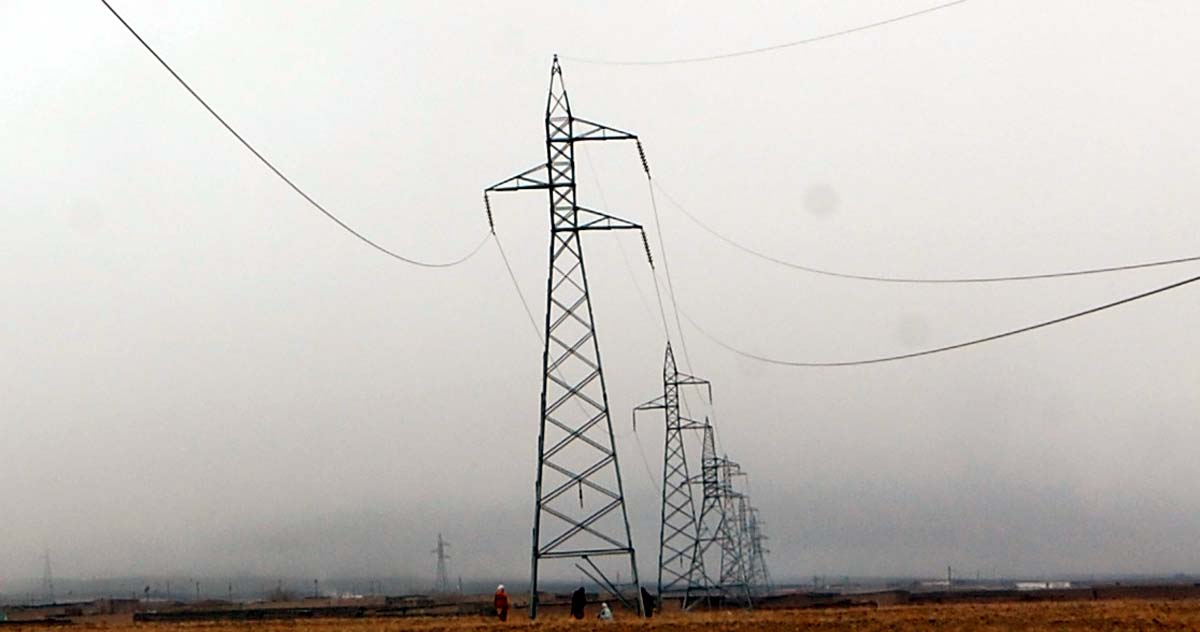
Lahore: The crumbling power sector in Pakistan is likely to have a shot in the arm with recent developments under Pakistan-China Economic Corridor (PCEC), but it may take years to finally eliminate the demand-supply gap and revamp entire power structure.
According to energy experts, there are multiple reasons for current energy crisis ranging from dilapidated transmission network to line losses, electricity theft to non-payment of bills, corruption element, increasing demand and more reliability on imported fuel for power generation. All of them need to be fixed on an immediate basis to meet future energy requirements, but curbing circular debt is vital among other issues.
Spokesperson for Water and Power Ministry Zafaryab told NewsLens Pakistan about the possibility of coping with the demand-supply situation to a satisfied level before next general election linking it with smooth flow of current policies.
“The present government has taken major initiatives towards fulfilling energy demands which includes new generation, completion of ongoing projects and other options like electricity import. These initiatives are short, medium and long term. It is believed that in 2017-18 major portion of the country’s energy demand would be met provided these initiates go on unhindered.”
But before fulfilling this demand, the government has to eradicate the biggest issue —- power sector receivables or circular debt, which is an obstacle to investment under public-private partnership.
In 2013, soon after the Pakistan Muslim League (Nawaz) took over, the finance ministry had released Rs 480.1 billion to clear Rs503.1 circular debt figure. The remaining amount of Rs22.9 billion, however, was withheld on account of liquidated damages owned by Independent Power Producers to the government.
But as of February 2015, the total receivables of power sector once again have reached to an alarming figure of Rs647.6 billion. The figures provided by National Transmission and Dispatch Company (previously Pakistan Electric Power Company) reveal that the federal and provincial governments along with Azad Jammu Kashmir and Federal Administrative Tribal Areas have to pay Rs201.6 billion, whereas private sector has to pay Rs408 billion to distribution companies.
Talking to the NewsLens Pakistan, former managing director of Pepco Tahir Basharat Cheema said: “In such circumstances if any investor opts for energy investment, it should be welcomed by all of us. How can you expect from private consumers to espouse billing culture when the government itself lacks in it? Pakistan’s power sector is the biggest victim of outside interference and being misused massively by nearly every institute.”
As experts say the subsidy on electricity prices is the biggest reason for ever mounting circular debt which is discouraging IPPs to operate at full capacity, the Ministry of Water and Power terms low recovery and line losses main reasons.
The high cost of generating electricity is another reason why the government is not able to meet the demand; however in a policy shift they are now focusing more on indigenous resources to bring down the cost per unit at that level where at least the government manages to equalize the cost and sales per unit.
Pakistan is currently relying heavily on thermal power and within it a major chunk is of imported oil. Pakistan’s dependence on indigenous resources has depleted over the years. For example, Pakistan’s dependency on hider power has reduced to 29% in 2013 as compared to 60% in 1980. Similarly its dependence on thermal power generation has increased to 68% in 2013 which was 40%in 1980.
It is widely believed that Pakistan’s electricity problems are owing to less generation capacity and wrong fuel mix.
According to a report of the Energy Planning Expert Group on Pak-China Economic Corridor, Pakistan’s energy needs are likely to grow at a rate of 7.5% in-between 2013-2020 and the demand which is currently estimated at 24,230MW is likely to reach at 31,895MW with an annual growth rate of 7.8%.
However, Cheema said in 2030, it would cross 100,000 MW and to meet this huge demand, use of indigenous resources would be vital. China under PCEC is also urging use of indigenous resources as a perfect mix to meet the demand at affordable rates. Chinese investors are also focusing on use of indigenous resources, primarily hydel and coal.
The latest studies carried out by Water and Power Development Authority with the help of other agencies suggest some 1,40,000MW hydro power potential in Pakistan. Whereas the coal reserves of 175 billion ton in Thar can generate hundreds of thousands of megawatts of power for several years via coal-fired power plants.
“Pakistan needs a perfect balance of hydel and coal-based power plants to attain an affordable per unit tariff in future”, said Weikai Gao, Chief Executive Officer of Global Mining Ltd China, while talking to NewsLens Pakistan. He, however, said that Pakistan needed many years to fully bridge the demand-supply gap, as its energy demands were increasing more than its population growth, which according to World Bank is 2.7% — the most in the region — as compared to India’s 2.4% and Sri Lanka’s1.3%.
“The symbol of correction will be observed immediately if the government commits to correcting structural issues. If the core issues will be addressed, it will take 3-5 years to revamp power sector in Pakistan,” Cheema said.



